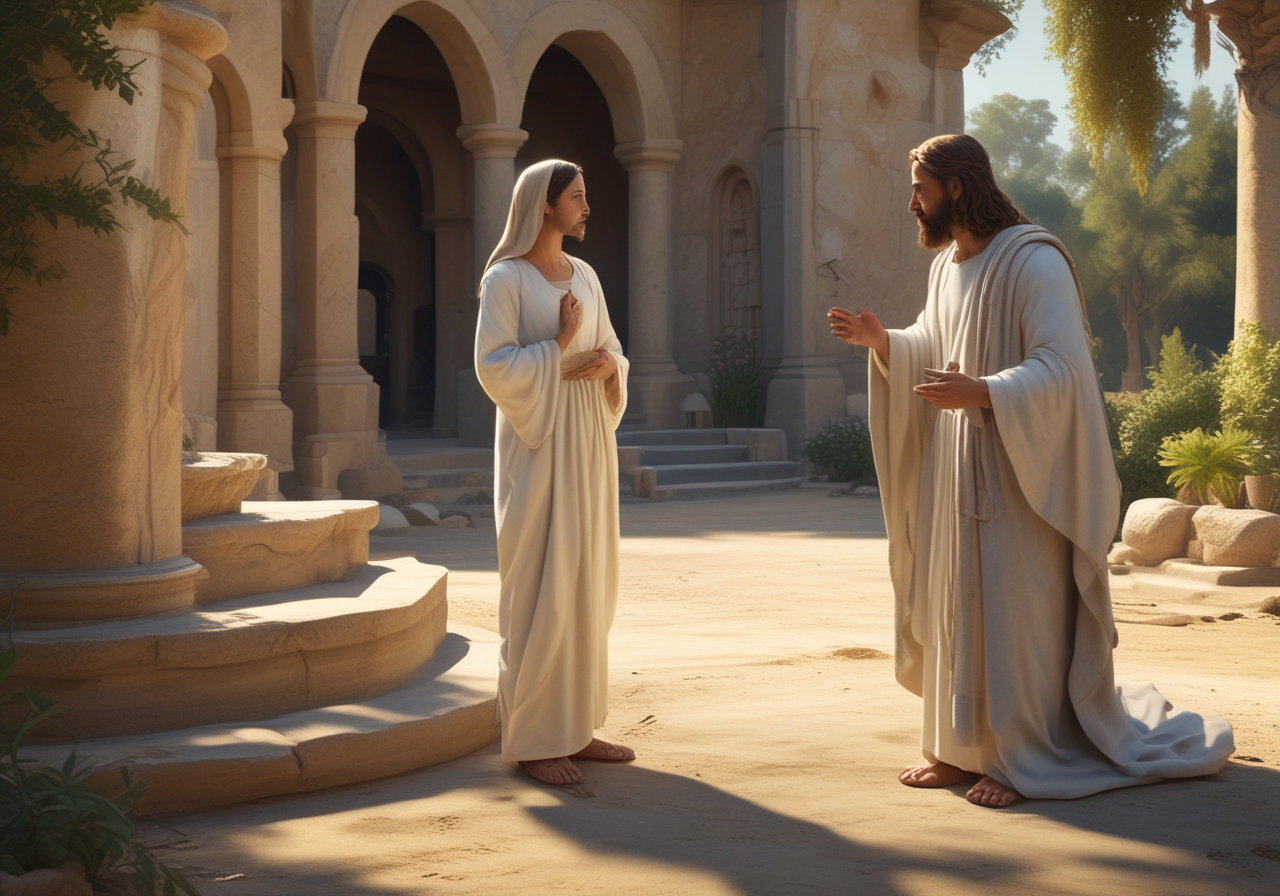Physical Address
304 North Cardinal St.
Dorchester Center, MA 02124
Physical Address
304 North Cardinal St.
Dorchester Center, MA 02124


Genuine faith is the unwavering and unshakable belief and action upon the words spoken by God, even without any tangible proof. It emanates from the revelation of the Spirit of God within our hearts. As we internalize and trust in these words from God, the creative force of faith in God will produce the promised outcome in our physical reality.
The principle of “believing is seeing” represents a fundamental shift in how we approach faith and manifestation in our spiritual journey. Here are the essential takeaways:
When properly understood and applied, as we will show in the articles on this site, these principles transform our spiritual walk from one based on physical evidence to one rooted in unwavering faith in God’s promises.
In Matthew 9:28-30, two blind men approached Jesus and asked him to have mercy on them and give them their sight. Jesus asked them if they believed he could do it, and they responded, “Yes, Lord.” Jesus then said to them, “According to your faith let it be done to you,” and their eyes were opened.

This example illustrates the “Believing is Seeing” principle that Jesus teaches. The blind men believed in Jesus’ ability to heal them, and their faith allowed them to see the physical evidence of his healing power. Jesus did not perform the miracle before they believed; instead, their belief in his power made the miracle possible.
This principle applies to physical healing and all aspects of life. When we believe in something, our faith can make it a reality. Our belief in God, ourselves, and future possibilities can shape our thoughts and actions and ultimately determine our outcomes.
Jesus’ teachings on faith remind us that belief is a powerful force that can shape our reality. When we have faith, we can see beyond our current circumstances and believe that better things are possible. When we act on that belief, we can bring about positive change in our lives and in the world around us.
In John 11:40, Jesus tells Martha, Lazarus’s sister, that she will see God’s glory if she believes. This statement comes after Jesus is informed that Lazarus has died and has arrived at the tomb where he was buried. Martha is upset and believes that if Jesus had been there, her brother would not have died.
4k photo of Jesus standing and talking to Mary outside a tomb

Jesus then asks for the stone to be removed from the tomb’s entrance and tells Martha that if she believes, she will see the glory of God. When the stone is removed, Jesus prays to God and calls Lazarus out of the tomb. Lazarus, who had been dead for four days, then emerges from the tomb alive.
The raising of Lazarus from the dead demonstrates the power and glory of God, and it is a powerful sign of Jesus’ divinity. Jesus’ statement to Martha, “If thou wouldest believe, thou shouldest see the glory of God,” is a reminder to us that faith is necessary to see the work of God in our lives. If we have faith and believe, we will be able to witness the glory of God in our lives, just as Martha and Mary did when they saw their brother raised from the dead.
There are two types of faith: Real or Revelation faith and Sense- or Head-Knowledge Faith.
Genuine faith is a deep belief that comes from the heart and is based on the revelation of the Spirit of God within us. It is firmly convinced that God’s promises are true, even if we cannot see any physical evidence. Genuine faith is the kind of faith that enables us to trust God and take action on what He has said.
On the other hand, Sense- or Head-Knowledge Faith is a type of faith that is based on our physical senses or our intellectual understanding. This kind of faith relies on what we can see, hear, touch, taste, or smell or what we have learned from others. Sense- or Head-Knowledge Faith cannot release the promises upon our lives. Only genuine faith can lay hold on God’s promises and release His power for our benefit.
The crowd that approached Jesus in Capernaum in John 6:28-30 provides an example of sense-knowledge faith. They asked Jesus what they needed to do to work the works of God, and Jesus answered that God only required them to believe in the one He had sent. However, the crowd’s response revealed that their faith was based on what they could see. They asked Jesus, “What sign do you show then that we may see and believe?” This type of faith is not based on revelation but on sensory experience and is not the same as the God-kind of faith, which is real or revelation faith.
To correct the misconception that “Seeing is believing,” we must understand that the opposite is true. Jesus taught us that “Believing is Seeing,” and we need to act on our belief in the gospel and the word of God before we see the physical evidence of it. We shouldn’t wait to overcome obstacles before doing what God has told us, as this principle of believing God’s Word before any physical evidence is what brought us eternal life. Instead, we must believe in God’s promises and act on them, despite obstacles and contrary evidence. Blessed are those who believe and exercise the power in the name of Jesus, for they’ll see themselves scaling impossible barriers with God’s strength.
Similarly, we shouldn’t wait for our problems to disappear before walking in the joy of the Lord. We need to confess the joy of the Lord as our strength and act as if God’s Word is true, even if we don’t see immediate results. By doing this, we’ll see the power of God at work in our lives as our headaches disappear, our stomach troubles calm down, and His riches meet our needs in glory. So, remember that “If you believe, you will see the glory of God.” Start acting on your belief today.
The story of Thomas, a disciple of Jesus Christ, is described in this section as highlighted in the New Testament. Thomas refused to believe that Jesus had risen from the dead until he saw the resurrected Christ physically and touched the nail prints on His body. Jesus appeared to Thomas later and allowed him to see and feel His wounds, which led Thomas to believe in the truth of the resurrection of Jesus. However, Jesus also pointed out that those who believe without seeing are blessed. The section underscores the significance of genuine faith that originates from the heart rather than physical evidence and highlights the blessings that result from believing without seeing.
In response to Thomas, the Lord said, “Because you have seen me, you have believed. Blessed are those who have not seen and yet believe.” Genuine faith brings blessings. Abraham received this blessing because he believed in what God promised him, even though he had not seen it. Abraham called those things “that be not as though they were.”
Just as Abraham demonstrated unwavering faith in God’s promises despite seemingly impossible circumstances, we, too, can walk in that same powerful faith today. When facing challenging situations, remember that true faith isn’t about waiting to see before believing – it’s about standing firm on God’s Word regardless of what our natural eyes perceive.
Like Abraham, who “called those things that be not as though they were,” we must align our declarations with God’s promises. When your bank account shows a lack, declare God’s provision. When your body shows symptoms, proclaim His healing. When circumstances appear hopeless, speak life and victory.
This faith journey requires courage and persistence. There will be moments when everything around you contradicts your beliefs. Yet, these are precisely the moments when your faith can shine bright. Remember Hebrews 11:1: “Faith is the substance of things hoped for, the evidence of things not seen.”
Stand firm in your faith today. Let your words and actions align with what you believe, not what you see. As you follow in Abraham’s footsteps of faith, you, too, will experience the manifestation of God’s promises in your life. When you genuinely believe, you will see God’s glory revealed in ways beyond your imagination.